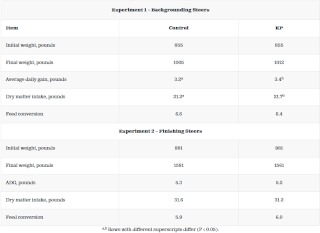Kernel processing (abbreviated as KP) involves passing harvested silage through a set of rollers mounted on the chopper. This is a standard recommendation for dairies, and it is becoming more commonly recommended for beef producers. The theory is that by processing the silage, the corn kernels and cob portions will be broken up, resulting in greater digestibility and less sorting. But does this extra step result in improved efficiency and reduced costs of gain?
Asking the question is important because, although beef and dairy cattle are obviously both bovine animals, they are not the same, at least when it comes to meeting their nutritional needs. Dairy cattle eat much more feed per day than do beef cattle. With greater feed intake comes a more rapid rate of passage through the digestive tract. Faster rate of passage equals reduced extent of feed digestion, simply because the feed is in the digestive tract for a shorter period. For that reason, interventions to improve feedstuff digestibility typically show greater response in dairy cattle compared to beef.
Investigating Beef Cattle Performance
We conducted two experiments at South Dakota State University to gain some insight into this question. In our first experiment, we fed silage (control compared to KP) at 65% of dry matter to backgrounding calves for 46 days. Our second experiment also compared normal to KP silage in finishing yearling steers with a 20% dry matter inclusion in the diet. The results of these two studies are shown in Table 1.
Table 1. Effect of Kernel Processing on Growth Performance and Feed Efficiency
In Backgrounded and Finishing Steers

Findings
Backgrounded steers responded positively to KP with 6% greater average daily gain (abbreviated as ADG), and a 3% numerical improvement in feed efficiency. On the other hand, KP had no effect in finishing steers. The differing responses likely have to do with how much silage was fed. Silage made up 65% of the backgrounding diet, but only 20% in the finishing cattle. If there were any differences in starch digestibility in the finishing steers, that did not translate into improved performance.
The performance differences we observed in the backgrounding study were modest, but would improve financial results. Assuming that the value of gain is $1.50 per pound and that diet costs were $200 a ton on a dry matter basis, KP improves margins by approximately $9 per head. That equates to approximately $10 greater per ton silage value when used in backgrounding diets with similar inclusion rates. In contrast, KP did not enhance silage value for finishing cattle based on the results of our experiment.
We did not evaluate the number of whole corn kernels in the manure, or the degree of sorting cob pieces in the bunk. Bunks for both sets of cattle were tightly managed, and there was little to no feed left over from day to day. Many people do get concerned about seeing corn in manure and count that as lost gain potential, but at least in our experiments, kernel processing corn silage made little difference in terms of actual pounds of cattle to sell, especially in finishing cattle.
Source :